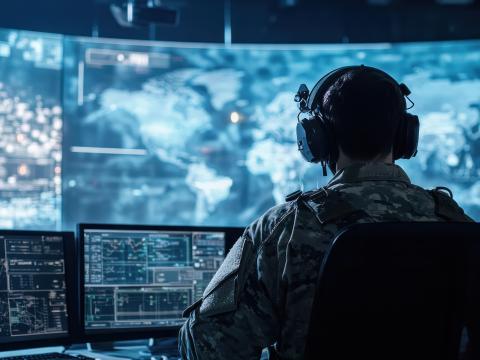A Deep Bench, Not a Chair, Makes for Strength in Military Information
Future technology managers need to know and continue today’s best practices and keep innovation at the top of their minds.
As the Pentagon improves its digital capabilities, and zero trust, cloud computing and other adoptions go from buzzword to part of every service member’s life, a new cohort of technology leaders must be ready to continue pushing forward.
“There are multiple people that at any time I could walk out the door and hand the baton to, and feel 100% comfortable,” said Lauren Barrett Knausenberger, chief information officer (CIO), Department of the Air Force.
Knausenberger herself and the Navy and Army CIOs have announced their retirement.
“I feel like our bench, like all the way throughout the enterprise, whether we're talking about our lead command or a [program executive office] or a broader organization, I feel like we have such a strong team that is aligned around that strategy, working together in just a really well orchestrated fashion on the road maps,” Knausenberger said on Thursday.
In a relaxed fireside conversation with AFCEA’s Col. Mike Black, USAF (Ret.), vice president for Defense Knausenberger spoke about the relationship she had with her counterparts from the Navy and the Army. “The three of us kind of banded together, we did some good things across the department, and especially, I feel like that partnership between Air Force and Navy just has been really strong.”
But partnerships with other parts of government went beyond, into one of the biggest technical issues Department of Defense networks face beyond the continental United States.
“One thing I'm excited right now is partnering with [the Defense Information Systems Agency] to crush with them latency in the theater, which is going to be huge and to be able to grab whatever signal we can grab and provide resilient, reliable comms anywhere in theater and to do it securely,” Knausenberger told the audience at AFCEA’s Technet Cyber in Baltimore.
Part of Knausenberger’s focus is on how users operate far from home networks, sometimes, building things that have already been developed elsewhere in the armed services.
“People are going to innovate sometimes; sometimes, it’s actually healthy,” she said.
“Just to allow, especially our warfighters at the edge, to solve problems and to educate themselves on how to solve problems and to kind of share and take pride in some of that,” Knausenberger explained.
Climbing the ladder, the situation changes, according to Knausenberger: “As we scale solutions, though, that's definitely where we want to be aligned, we want to have an eye toward interoperability, and we want to, even when we don't know exactly what we're doing, we want to kind of know where we're gonna meet.”
She explained the topics like zero trust and secure identification are an enterprise job, as well as the concern to keep the user experience satisfactory at all levels.




Comments